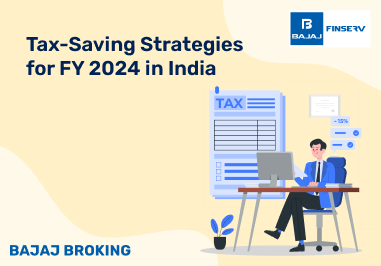A Comprehensive Guide: Contribution Margin in Finance
The contribution margin of a business is calculated when the variable cost of a business is subtracted from its total business revenue. This margin or amount can then be used by the business to pay for fixed costs like rent etc. If there is any contribution amount left after covering the fixed costs, then the remaining amount is considered the business’ earnings. In this article, we will take a look at everything you need to know about C margin in finance.
Addtional Read - Margin Calculator
What is C Margin in Finance
The contribution margin can either be calculated on the total products or on a per-unit basis. The C margin essentially represents the cash inflow that each product or unit sold brought in after subtracting the variable costs from it.
So basically, the contribution margin of a product is its selling price minus its variable cost. The main aim of the contribution is to help companies gauge how large a part a particular product plays in making the company profitable.
Additional Read: Trading Account: Definition, Types, How to Open & Key Benefits
How to Calculate Contribution Margin
You can calculate contribution margin by subtracting the variable costs that accompany the production and selling process from the sale price of a product. The formula to calculate contribution margin is:
C = R−V
Here:
C = Contribution Margin
R = Total Revenue
V = Variable Costs
Some businesses find it easier to express the contribution margin in the form of a fraction. To calculate Contribution Margin Ratio (CR) in such a case, the formula is listed below:
CR=R(R−V)
Here, you can easily calculate the contribution margin by dividing the total revenues within the same period.
Examples of C margin
After looking at the formula for contribution margin, here’s a look at an example to understand what contribution margin is better:
Let us take company A which manufactures and sells a product for ₹500. The variable cost of this product is ₹200 per unit.
The formula for Contribution Margin: Sales Revenue per unit – Variable Cost per unit
₹500 – ₹200 = ₹300 per unit
Here, the contribution margin is ₹300. This amount will cover the company's fixed costs and generate potential profits.
Key Difference Between Gross Profit Margin vs. Contribution Margin
Let us have a look at the basic differences between gross profit margin and contribution margin:
Attributes
| Gross Profit Margin
| Contribution Margin
|
Sales
| The gross profit margin includes all the costs that a company incurs when they want to make a change
| The contribution margin only counts the variable costs that the company incurs to make sales
|
Cost of Goods Sold
| Calculates a company’s profitability. This is done by subtracting the cost of goods sold from the company’s total revenue.
| Indicates the additional revenue that is produced by additional sales that can be added to the company’s profits
|
How Are C Margins Useful?
The contribution margin is a very handy tool for many companies and investors alike. With the help of the contribution margin, a company can determine which of its products is contributing the most to the company’s overall profits. By keeping this in mind, companies can eliminate the production of products that aren’t contributing much to their profits, thus reducing the total variable costs of the company to a great extent. This, particularly, is helpful, in the context of companies that manufacture diversified products, where the company can reallocate its resources towards the manufacturing of goods and services that have the highest profit potential.
The contribution is also equally important to an investor as it is to a company. With the help of the contribution margin, investors can track the high-performing products of a particular company and gauge how dependent a company is on these products. If a company seems like it is backing away from focusing or spending on the expansion of these products, the chances of the company’s profitability and by extension its share prices getting affected are high.
Additional Read: What is Intraday Trading? Benefits, Types & Advantages
Conclusion
The contribution margin is one of the many figures that both companies and investors depend on to make investment decisions. The main purpose of the contribution margin is to determine the revenue produced by a company when it sells an additional number of certain products or services. The contribution margin can help companies make a decision regarding which products they should use their resources keeping in mind its profit potential.
Disclaimer: Investments in the securities market are subject to market risk, read all related documents carefully before investing.
This content is for educational purposes only. Securities quoted are exemplary and not recommendatory.
For All Disclaimers Click Here: https://bit.ly/3Tcsfuc













